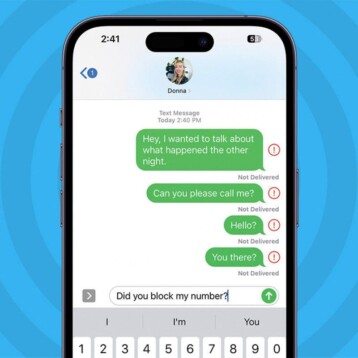
Mobile gaming is something else. The fact that a device that fits in the palm of your hand can run massive games like PUBG, The Sims, and Call of Duty is probably not something we anticipated 20 years ago. Gaming hasn’t been confined to non-portable consoles or bulky PCs for a while – it’s so accessible that anyone can play a wide variety of exciting and entertaining digital games just about anywhere, whether you’re waiting for the bus or sitting in the park.
But how did this revolution come about? What was previously a mere daydream is now an everyday reality we often take for granted. The evolution of mobile gaming certainly didn’t happen overnight; it happened through a mesh of things like technological advancements, cultural changes, and an appetite for interactive fun.
The Birth of Mobile Gaming
If we look back at the early days of handheld game consoles in the ‘80s, we can instantly draw parallels between them and mobile gaming. These handheld consoles were the first time people could game on the go, though in a much more simplistic format. The first game console that supported cartridges was the Milton Bradley Microvision, released in 1979. While it was innovative for the time, it merely consisted of a primitive directional pad, action buttons, and a tiny 16×16-pixel LCD display.
The year after, Nintendo broke into the market and released their Game & Watch system, which was an already much-improved iteration of the handheld console. It wasn’t until 1989, however, that Nintendo solidified its reputation in the handheld gaming market with the release of the Game Boy. It didn’t just boast a spectrum of now-classic games and arcade-style play; it became a massive cultural phenomenon around the world.
Many of us now look back fondly at our Game Boy days with nostalgia, with memories of iconic games like Tetris, Pokémon Red and Blue, Kirby’s Dream Land, and The Legend of Zelda: Link’s Awakening.
Transitioning to Mobile Apps
With the allure of portability in the air, it was only a matter of time before gaming became something you could do on a mobile phone. While it took some time for smartphones to become commonplace, we already saw and played games on early mobile phones like Nokia phones. With these simplistic games, it was almost like we were regressing to the rudimentary stages of handheld consoles, with very basic graphics and limited gameplay depth. Games like Bounce Tales, Snake, and Space Impact still gained a lot of popularity as they acted as a source of entertainment.
Once the smartphone was released, in particular the first Apple iPhone in 2007, we saw a new chapter of mobile gaming unfold. Touchscreens with multi-touch technology were in – and opened up new possibilities. People were captivated by the range of features that they could access from one single device – a music player, internet browser, email client, phone functionality, and a camera – so it was only natural that mobile gaming would be a part of the smartphone experience.
With the first iteration of the iPhone, there were preinstalled apps and the opportunity to install web-based apps, but no way to install native third-party apps. So, in 2008, Apple launched the App Store. Developers now had a way to distribute their games to users worldwide, and iPhone users were able to discover new mobile games at the tap of a button. Soon, Samsung followed suit, and apps became commonplace among smartphones.
Broadening the Gaming Experience
At the start of the mobile gaming boom, the sort of games that took over the scene were simple yet compelling games that had easy-to-learn mechanics. Developers were capitalizing on bright graphics, addictive gameplay loops, and intuitive swipe-and-tap controls to get people playing. Games like Doodle Jump, Temple Run, Flappy Bird, and Fruit Ninja were on everyone’s lips, thanks to their pick-up-and-play style and attractiveness to both young kids and adults.
While these games continue to be massively popular, the landscape of mobile gaming began to evolve as technology progressed. With these new technologies, developers began showcasing the visual potential of smartphones. We began to see games that offered rich storytelling, immersive and atmospheric qualities, and, of course, multiplayer and social gaming features.
Strangers and friends could battle it out on ‘Words with Friends’ (a Scrabble-inspired game), ‘Draw Something’ (similar to Pictionary), and other console-quality games like ‘Call of Duty.’ People could spend hours gaming on their phones like they would do on a console, thanks to these vibrant communities and immersive experiences.
And it didn’t stop there – mobile gaming introduced another new dimension with the introduction of augmented reality (AR). Players could now interact with virtual objects and environments overlayed onto the real world through their smartphone cameras. It was immersion at its fullest, with one title that got millions playing all around the world: Pokémon Go. The AR feature allowed people to explore real-world locations, capture virtual Pokémon, and battle with other players.
Casino Games and Mobile Slots
The most recent evolution in mobile gaming was the entrance of casino games and mobile slots. Shifts in gambling regulations opened doors to gambling on the go, with traditional casino favorites like blackjack, poker, roulette, and a large selection of themed slot machine games. In fact, it’s gotten so advanced that we’re now seeing the integration of live human dealers – simulating the experience of playing at a real casino. Many casino apps are available on app stores, each offering its own perks and selection of mobile casino games. A platform like casinos.com stands out for its outstanding collection of mobile games, providing players with that beloved variety to explore and enjoy.
Celebrating Mobile Gaming
Mobile gaming mirrors the experience of switching out cartridges in handheld consoles in many ways. Just as swapping cartridges gives you completely novel gaming experiences, switching between apps on your smartphone lets you indulge in that same versatility. Smartphone users can now enjoy a diverse and never-ending range of gaming genres and styles, from casual puzzles to engrossing adventure games and everything in between. With its great convenience and limitless possibilities, mobile gaming continues to be boundless, and we’re sure to see extraordinary innovation in the years to come.










